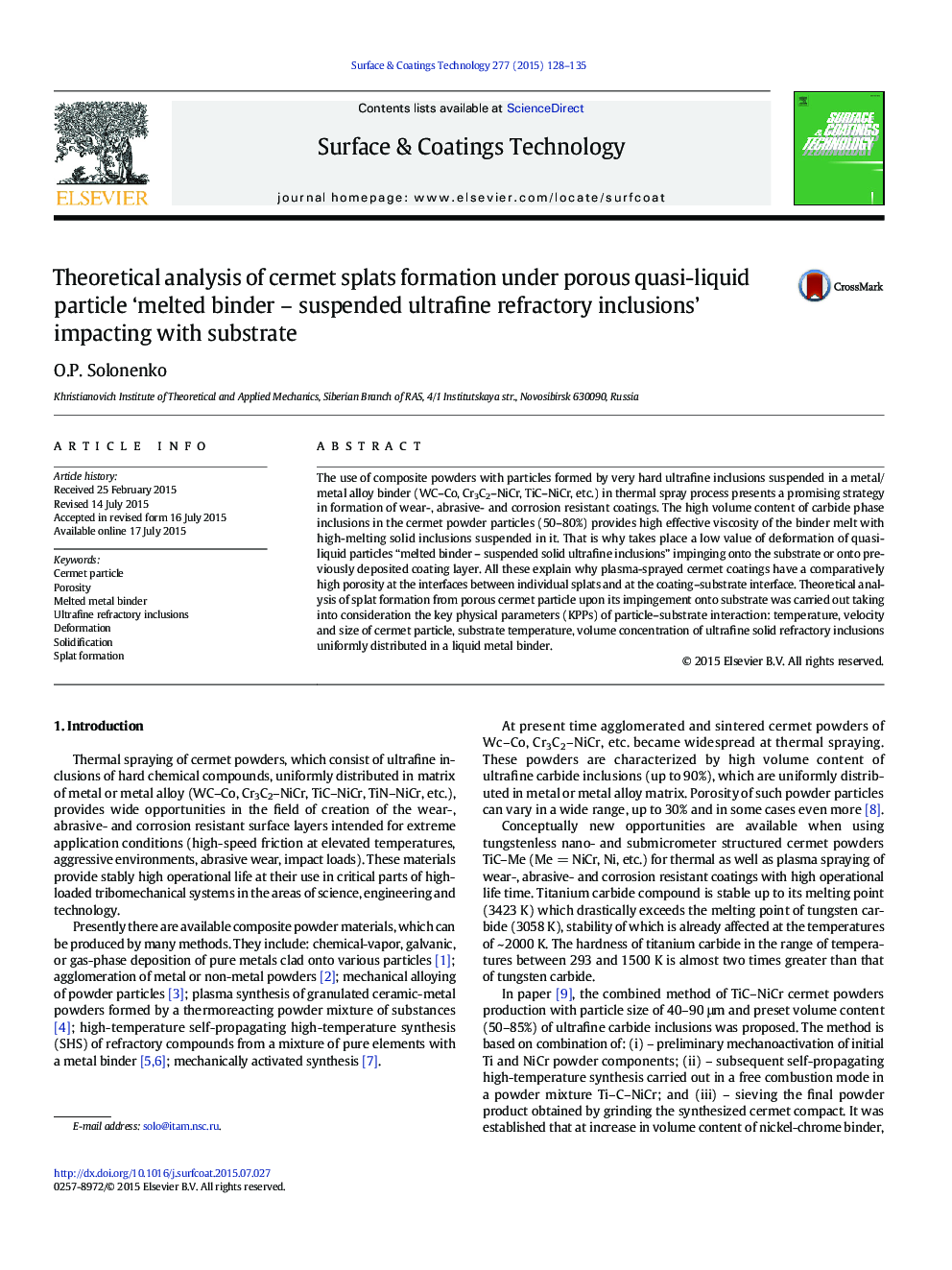| Article ID | Journal | Published Year | Pages | File Type |
|---|---|---|---|---|
| 1656848 | Surface and Coatings Technology | 2015 | 8 Pages |
•Theoretical approach to prediction of the cermet splats' characteristics is presented.•Splat is formed at quasi-liquid particle deformation and solidification on substrate.•Solution derived takes into account all key physical parameters (KPPs) of interaction.•KPPs include: particle size, velocity and temperature, and substrate temperature.•Using the obtained solution WC-12%Co splats' characteristics vs. KPPs were analyzed.
The use of composite powders with particles formed by very hard ultrafine inclusions suspended in a metal/metal alloy binder (WC–Co, Cr3C2–NiCr, TiC–NiCr, etc.) in thermal spray process presents a promising strategy in formation of wear-, abrasive- and corrosion resistant coatings. The high volume content of carbide phase inclusions in the cermet powder particles (50–80%) provides high effective viscosity of the binder melt with high-melting solid inclusions suspended in it. That is why takes place a low value of deformation of quasi-liquid particles “melted binder – suspended solid ultrafine inclusions” impinging onto the substrate or onto previously deposited coating layer. All these explain why plasma-sprayed cermet coatings have a comparatively high porosity at the interfaces between individual splats and at the coating–substrate interface. Theoretical analysis of splat formation from porous cermet particle upon its impingement onto substrate was carried out taking into consideration the key physical parameters (KPPs) of particle–substrate interaction: temperature, velocity and size of cermet particle, substrate temperature, volume concentration of ultrafine solid refractory inclusions uniformly distributed in a liquid metal binder.
